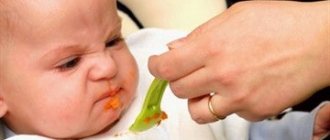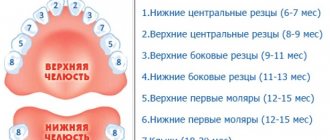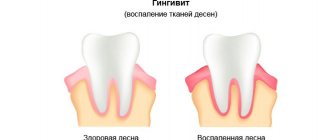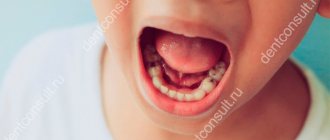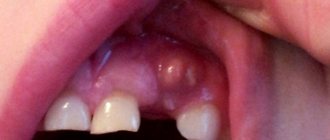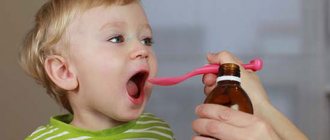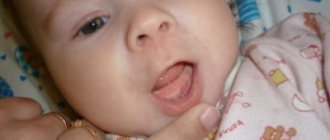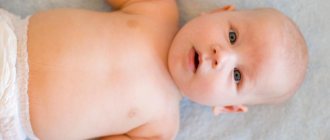How do baby teeth fall out?
When a child loses their first tooth, there is reason to celebrate! But sometimes teeth don't fall out as easily as we'd like. Having children's teeth extracted is an unusual situation for parents who wonder whether it could harm their child.
Some parents are afraid that their child might swallow a tooth if they lose it while eating, and some children are very impatient when teeth fall out. But many little ones are afraid of tooth extraction precisely because of the fear of pain. The good news is that if the tooth is truly ready to come out, pulling it out is completely painless.
Children usually begin to lose their baby teeth at around 6 years of age, and this starts with the incisors. As the large molars begin to grow, the roots of the primary teeth dissolve, leaving them without any support other than a small amount of connective tissue. As this process occurs, baby teeth become increasingly loose.
A child's teeth will often fall out involuntarily when he simply plays with them, pressing his tongue against a loose tooth or rocking it back and forth with his fingers. Often the tooth simply falls out without pain, turning into a pleasant surprise for the child.
Of course, it is always better to let children's teeth fall out on their own. If your child shows you a loose tooth, ask him to regularly loosen it with his tongue to loosen it further. Most kids are more than happy to do this.
How to remove baby teeth at home
To ensure that the open wound is not contaminated with germs and food particles, you need to ask the child to brush his teeth and rinse his mouth with Chlorhexidine, which has antiseptic properties. Lubricating the gums with Kalgel or other pain-relieving ointment will help reduce the pain of the procedure.
You can extract a baby tooth at home in the following ways:
- Sometimes it is enough for children to eat a fruit or vegetable with a hard peel or pulp: an apple, a cucumber or a carrot. If a child's tooth can barely hold on, it will fall out even when biting.
- The next simple and effective way to quickly and painlessly extract a child’s baby tooth is to remove it by hand. Wash them with soap, cut a small piece of sterile bandage or separate a piece of cotton wool. Wrap it around the tooth and pull it sharply towards you with your fingers.
- How to pull out a baby tooth using a thread. It is enough to take 50 cm of strong nylon thread, fold it in half, tie it in a knot on the cutter, tighten it and pull it towards you. The thread can be disinfected before the procedure by wetting it with a Chlorhexidine solution.
- If you doubt that you can make a confident and quick jerk, tie a thread to the door handle and then quickly close it. At this moment, the baby's head should be slightly tilted and his mouth wide open. How to pull out a child’s tooth using this method so that he is not afraid: add a playful moment, interest the baby. For example, attach a bright toy or helium balloon to the opposite end of the thread. Then, after removal, the tooth can be sent on a journey, watching as the ball rises up, moving away from the ground.
Rules that, if followed, will ensure the safety of the procedure
When removing a child’s baby tooth, be sure to follow the recommendations of specialists. How to correctly pull out a baby tooth: pull the incisor located on the upper jaw downwards, and on the lower jaw - upwards. It is undesirable to pull it to the side, as this increases the area of the wound surface and increases the risk of damage to the root, the broken part of which may remain in place. If the attempt is unsuccessful, postpone the removal for a week or several days.
If the tooth is successfully removed, the child needs to rinse his mouth with a light pink solution of potassium permanganate, Chlorhexidine or sea salt solution. To prepare the last remedy, take a teaspoon of salt, a little baking soda and 3-5 drops of iodine in a glass of warm water. Then you can moisten a cotton swab with an antiseptic and apply it to the wound for 2 hours. The baby will be able to eat after 3 hours. During the first 24 hours, he should not eat cold or hot foods. After eating, remind your child to rinse his mouth with warm water. When brushing your teeth, you should avoid getting the bristles into the wound.
How to remove a loose baby tooth at home?
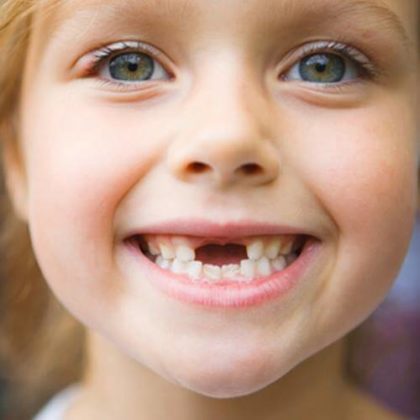
If it doesn't seem like it will happen on its own, you can help the process.
Start by applying a small amount of anesthetic to the area around the tooth and allow it to sit for a few minutes. Using a cloth or soft tissue, squeeze the tooth and move it back and forth. If you feel a lot of resistance, the child is not yet ready for loss.
But if the tooth is acting as if it is hanging by a thread of tissue, you can simply pull it with a quick twist or tug.
You may see bleeding where the tooth was secured. Using a clean gauze pad, you should apply pressure to the area. Take your child's mind off the blood by congratulating him on losing his tooth and letting him see the tooth.
Reasons for removing baby teeth at the dentist's office
Often, removing baby teeth in a child's early years may be a necessary dental procedure.
Shark teeth on a child
This is a condition where molars emerge behind a child's baby teeth before they become loose. This creates the illusion of two rows of teeth, like a shark's mouth. At about six years old, this can happen to baby teeth, and later, at about 11 years old, a similar situation can happen to molars.
This usually occurs when the root of a baby tooth is not amenable to dissolution. The permanent tooth will follow the path of least resistance and begin to grow behind. Typically, the baby tooth will still dissolve, just more slowly.
If a baby tooth remains for more than three months after the molar has fully erupted, a visit to the dentist is warranted. The specialist will evaluate any problems and decide whether to remove the baby tooth or any other adjacent baby teeth that may be interfering with the growth of permanent molars.
Supernumerary tooth
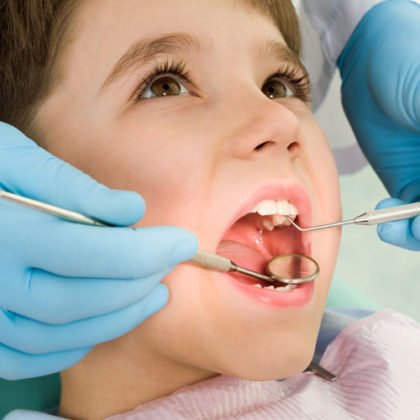
These are extra teeth or pieces of teeth that grow between or behind teeth. They can restrict normal tooth eruption, leading to crowding or clenching of the dentition.
Sometimes they can be caught early by taking an x-ray, but other times they erupt next to or behind other teeth. Most dentists remove them as soon as they are discovered to allow the surrounding teeth to move more easily into place or, if necessary, to begin orthodontic treatment.
Damage
Children get hurt easily. Falls, accidents and sports mishaps often result in damage to teeth or mouth. If a baby tooth can no longer be saved, the dentist will often choose to remove it. This may also help the molar emerge faster and also prevent decay from spreading from the damaged tooth.
How to remove a baby tooth at home
The child’s body is constantly being rebuilt, and by the age of 6, the first milk teeth begin to fall out. In some cases, the process is delayed, and the child needs help to get rid of a loose baby tooth. Let's look at how to remove a baby tooth at home quickly and painlessly.
Preparation
How to extract a child’s tooth at home if it is loose but does not want to fall out on its own? First you need to make preparations.
- Soberly assess your capabilities - in some cases, it is better to entrust the removal to a qualified specialist. For example, if there is a swelling or lump in the gum area, swelling, and the gum itself looks inflamed, you cannot remove the tooth yourself, since you can only worsen the situation.
- It is also necessary to determine in advance how flexible the tooth is. If it swings freely and the gums are loose, then you can remove the tooth at home without fear of consequences. If the gums are still dense and the tooth sits in it quite firmly, there is no need to rush. You should only contact your dentist if you experience discomfort or pain.
- First you need to take care of the tools that will make it easier for you to complete the task. Prepare in advance an antiseptic, any container so that the child can spit into it, gauze or nylon thread, bandage and cotton swabs.
- Talk to your child, explain to him that the procedure is absolutely painless and he has nothing to be afraid of. If the child fidgets during the procedure and is capricious, this may lead to the fact that you remove the tooth incorrectly and subsequently even require the help of a specialist.
- Before removing a baby tooth at home, you need to feed your baby well. After the procedure, you will not be able to eat for 2–3 hours in order to avoid introducing an infection into the wound and further injuring it. It is also necessary to invite the child to thoroughly brush his teeth and rinse his mouth in order to get rid of pieces of food, etc.
Executing the procedure
There are several ways to remove baby teeth.
- We soak the gauze in antiseptic, grab the tooth with it, slowly rock it, and carefully remove it. If the tooth yields well, it is better to pull it out with a quick movement - then the process will not be so painful.
- Many mothers ask how to pull out a baby tooth at home using a floss. It also needs to be pre-moistened in an antiseptic, and then secured around the tooth using a “tightening loop” knot. After this, with a confident movement, pull the thread upwards (you cannot pull sideways, you can damage the gums, the tooth will crumble, and a piece can get stuck in the tissue).
After finishing, the wound must be treated with an antiseptic. To stop bleeding, apply a sterile gauze pad to the hole and ask the child to bite it. After 20 minutes, the bleeding should stop completely and the tampon can be removed.
To prevent the baby from experiencing stress, many parents turn tooth extraction into a real game for the child: they talk about the tooth fairy, exchange the tooth for nice gifts, etc. This is a good idea that will help your baby not be afraid of such manipulations.
Tips for parents when visiting the dentist and after a child’s tooth extraction
- The first thing that is recommended is to remain calm. Your child is good at reading your emotions and reactions and will respond accordingly. Talk to your child and answer any questions they have. Be honest with him about what to expect, but you should reassure your child of the best outcome of the process.
- Once the tooth is removed, the child will need to remain in the office until the bleeding slows or stops. Post-procedure instructions will be given regarding food and drink restrictions, directions for caring for the wounded gum, and activity restrictions until full recovery occurs.
- Subsequent visits will be required depending on the healing of the wound. Infection or excessive pain is a reason to visit the dentist again.
Strategic Recommendations for Managing Loose Primary Teeth
To summarize all of the above, we can highlight the following points.
- Let the child loosen and pull out the tooth himself.
Although it can be tempting to pull a baby tooth, it is best if you let your child do it themselves. This way, he will be able to assess how painful it is to pull the tooth, and can tell how much it can be pulled out. A child who pulls his own tooth will be able to do it more painlessly than you.
- If you are concerned, see your dentist.
If you have any concerns about the way your teeth are falling out or are concerned about the way your molars are coming in, see your dentist to make sure there are no problems.
- Use a gauze pad to stop bleeding.
Sometimes complications can develop when children's teeth are pulled.
As a rule, the only unpleasant consequence is minor bleeding. Use a gauze pad and apply pressure to the area of the lost tooth to help stop the bleeding.
- Visit your dentist if tooth fragments remain.
You may find that tooth fragments remain after the extraction. In this case, it is recommended to visit a dentist.
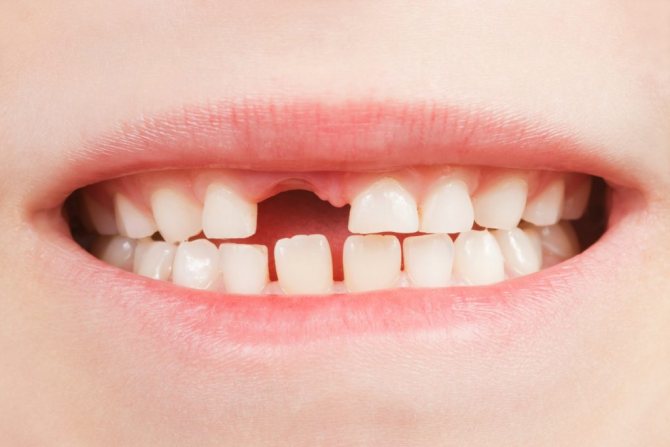
Do not attempt to remove these fragments yourself, as they may be embedded in the gums and cause serious pain to the child if they attempt to remove them themselves.
- Keep an eye on your mouth.
Continue to monitor the empty space after the tooth has fallen out. If after a day or two you notice redness or your child complains of pain, you should visit the dentist to make sure that there is nothing wrong with the child.
Removing a baby tooth, is it necessary?
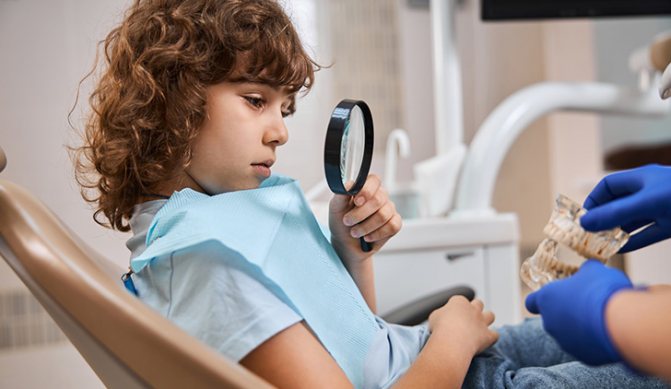
If your child's tooth hurts but is not loose, it may not need to be removed. In this case, I really recommend seeing a doctor. He will look at the baby’s teeth and tell you what to do next so that the child does not suffer from pain. There is a possibility that the tooth is affected by caries. In this case, the doctor will recommend treating it, especially if there is more than a year left before the temporary teeth are replaced with permanent ones.
If it is obvious that the tooth has only a few days left
It is very simple to determine that the removal of baby teeth in children is inevitable: the baby tooth is noticeably loose. However, do not rush to tie a thread to the door and pull the string. Before removing a tooth, four preparatory steps must be completed. First, feed your baby properly. The fact is that he cannot eat for two hours after removal, so make sure that the baby is fed.
Before tooth extraction at home:
- The child should brush his teeth thoroughly.
- Rinse your mouth before (and after) with an antiseptic mouthwash.
- Adjusting the baby, which may be a little painful.
After this, you can proceed with removal in any way that is closer to your baby’s liking.

